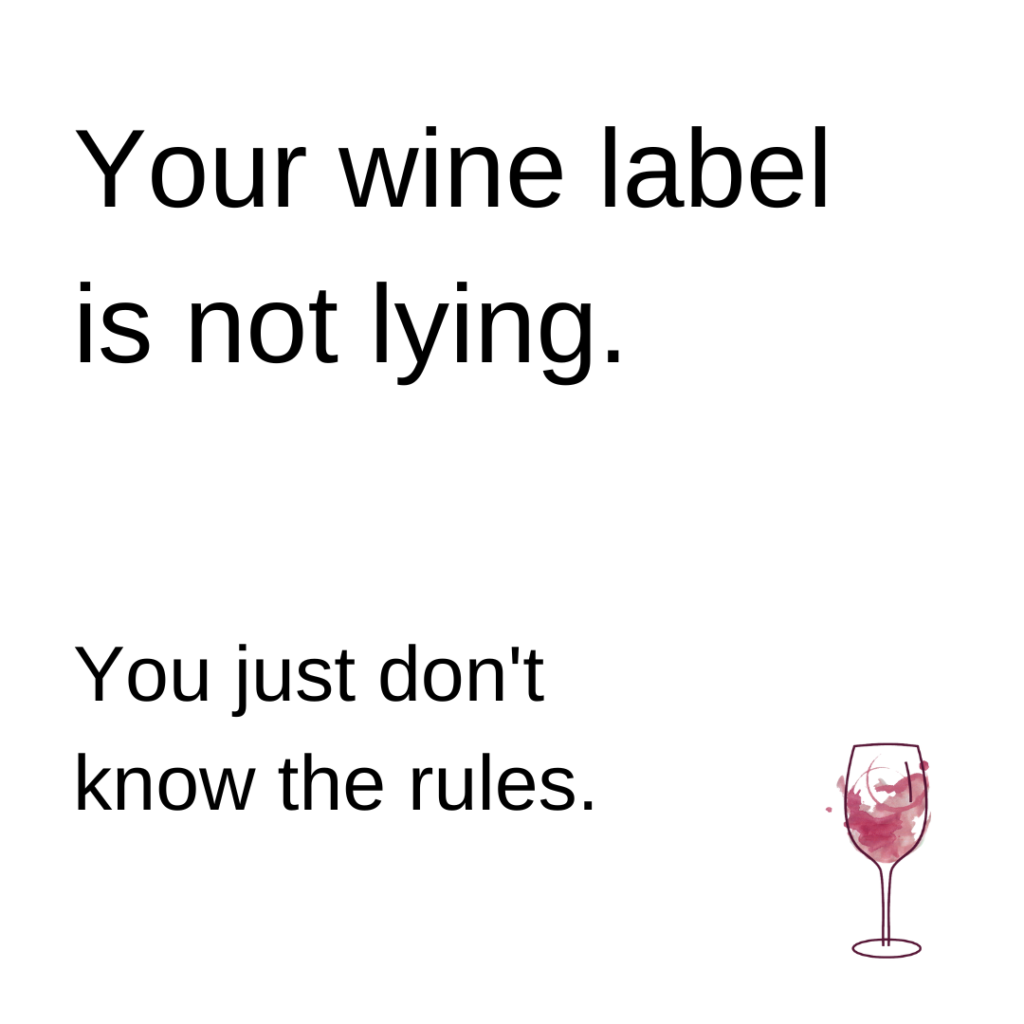Unraveling Wine Labeling in the United States
In the United States, wine bottle labels follow specific rules regarding the information they must provide. Three crucial aspects are covered: Varietal, Place, and Vintage, all of which can be easily remembered using the 75/85/95 Rule.

To list a varietal, such as Cabernet Sauvignon, on the label, the wine must contain a minimum of 75% Cabernet Sauvignon grapes. The remaining 25% can be any other variety, and the winery is not obligated to disclose the specific blend. As a result, the wine could be a pure Cabernet Sauvignon or a blend of various grapes. Some wineries voluntarily share this information on their label or website, while others do not. It’s important to note that there is no difference in quality; it’s merely a marketing choice. However, wines can significantly vary depending on their blending partners.
For the “Place” designation, at least 85% of the grapes used in the wine must come from the specified region or American Viticultural Area (AVA). AVAs are legally designated wine regions within the United States. Sometimes, if a winery’s usual fruit source is affected by factors such as wildfires, they may have to purchase grapes from outside the region, leading to wines labeled with a broader designation like “California.” Some wineries opt for a wider AVA designation to allow flexibility in labeling, especially if their grape supplier changes.
To list the vintage on the bottle, 95% of the grapes must come from the named vintage. However, wineries can use up to 5% of a previous year’s harvest to enhance the wine they are producing, adding depth to the blend. It’s important to note that this practice is not always done. If a winery uses more than 5% of another vintage, the wine must be labeled MV, Multi-Vintage, or NV, Non-Vintage. This labeling practice ensures transparency and accuracy for consumers.
